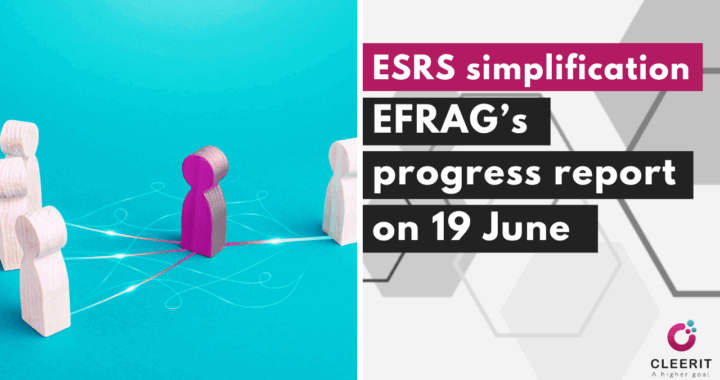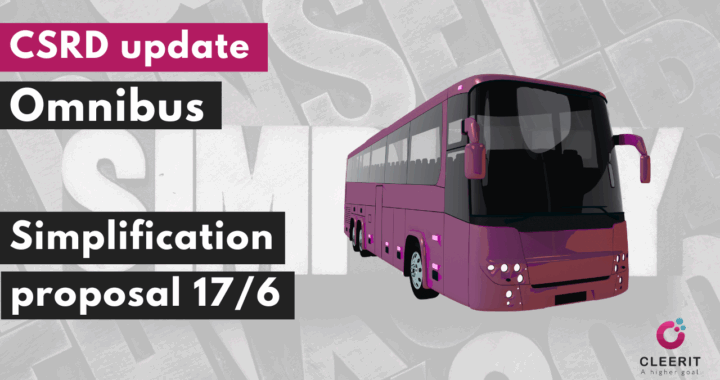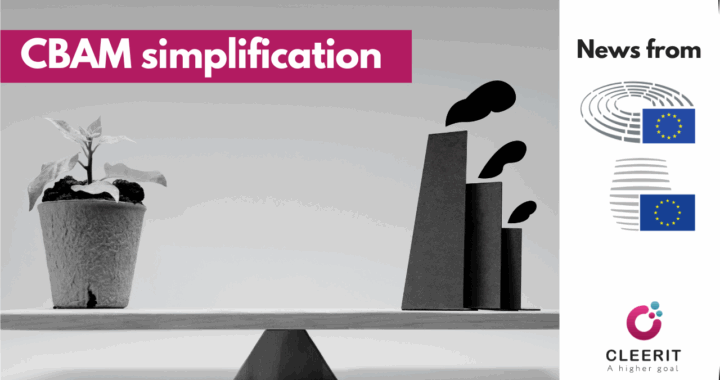Today, 19/6, EFRAG presented a progress report on ESRS simplification.
EFRAG stressed that they were impressed and grateful for the high level of engagement, with a large number of stakeholders responding to the consultations, in spite of the short timeline provided, and offering their input on critical levers and challenges related to datapoints. Over 16 000 feedback comments were analyzed by EFRAG, in addition to 110 hours of technical dialogue involving approx. 600 companies.
The following simplification levers have been identified, in short:
LEVER 1: Simplification of DMA (Double Materiality Assessment)
There is a crucial need to place the emphasis on the goal of the DMA, and reduce the overall complexity of the process and the extent of unnecessary scoring, to foster more streamlined reporting focused on relevant and decision-useful information.
Frequent comments concern a disproportionate effort compared to the result, and an excessive focus on process rather than outcome and the company’s strategic context.
Divergences in practice were observed as to whether negative impacts are assessed before or after mitigation, prevention and remediation actions, with important consequences in terms of comparability and relevance of information.
The following will be clarified:
- The DMA is normally to start from the analysis of the business model to identify the most obvious material topics (‘top-down’ approach).
- The expected level of evidence to support the conclusions must be reasonable and proportionate, in particular when it is obvious that a given topic is material for the sector, for peers and/or for the business model.
- Introduction of a materiality filter for all datapoints, including the ESRS 2 datapoints.
- The interaction between the identification of material impacts, risks and opportunities (‘IROs’) and the assessment of material topics and sub-topics.
- ESRS 1, AR 16 as a point of reference, not a compliance check-list.
- When only a sub-topic is material, the undertaking must limit the information reported to that sub-topic, without triggering the reporting of all the datapoints in the entire topical standard.
- The definition of impacts and how mitigation, prevention and remediation actions are considered in assessing an impact for materiality (gross or net approach). What constitutes a positive impact was also not clear.
- Whether the undertaking can include in its sustainability statement information about non-material matters (e.g. when requested by rating agencies); and if so, under which conditions.
LEVER 2: Introducing flexibility to avoid duplications and focus on what matters the most
The general feeling is that companies had difficulties in ‘telling their story’ with respect to sustainability topics and in sharing their views with their stakeholders, amongst other reasons, because the flexibilities that exist already in the standards were not clearly stated and, as such, have not been well understood by preparers and auditors.
It was unclear how to consider ‘may disclose’ datapoints in determining the materiality of information, leading to different conclusions.
The perception of sustainability reporting as a compliance exercise has developed, which is unfortunate since the ambition of the CSRD is to place sustainability reporting on a comparable status with financial reporting (i) by creating a repository of quality sustainability-related data and also (ii) by providing summarised information.
The following areas of flexibility will be clarified:
- Providing the option to have an ‘executive summary’ at the beginning of the sustainability statement to offer a summarised view (the undertaking’s material topics, their relationship with the key aspects of its strategy and governance, its performance and its contemplated trajectory with respect to these topics…).
- Providing the option to disclose the most granular information, such as detailed metrics, in dedicated sections or appendices.
- Clarifying that presenting the EU Taxonomy-related information in a specific appendix is allowed.
- Suggesting the provision of additional information on non-material matters in dedicated sections or appendices.
- Discouraging fragmentation and/or repetition of information pertaining to the same topics.
LEVER 3: The relationship between Minimum Disclosure Requirements (MDR) and topical specifications
The generic MDRs in ESRS 2 provide detailed mandatory datapoints for PATs (policies, actions, targets). Topical standards also provide detailed mandatory datapoints that specify PATs for each topic.
The combination of the generic MDRs in ESRS 2, with these detailed mandatory topical specifications has been perceived as creating unnecessary duplication/repetition and a source of ambiguity.
Similar overlaps exist between ESRS 2 and topical standards in the areas of governance and strategy and in relation to the disclosure requirement IRO 1.
In addition, the datapoints in the narrative disclosures of PATs in the topical standards are considered too granular and for this reason not always informative, and have also been perceived as requiring a granular description at IRO level in all cases.
The following decisions are now considered:
- Maintaining cross-cutting MDRs at the ESRS 2 level in terms of ‘shall’, under a revised/reduced number of datapoints.
- Drastically reducing the mandatory PAT specifications (‘shall datapoints’) in the topical standards to the strictly essential ones.
- Clarifying that PATs are only to be reported ‘if you have’ them (i.e., no behaviour mandated) and if related to materials matters.
- Implemented policies would be focused on topics instead of individual IROs (with exceptions when the latter is the level adopted for managerial reasons).
- Centralising around a single datapoint the list of material topics for which there are no PATs, without requiring the disclosure of reasons for not having them and offering an option to provide a timeline for implementing them.
- Reinforcing flexibility and readability of streamlined disclosures by clarifying (i) that there should be no duplication of content on the same PATs in different parts of the sustainability statement, (ii) that a policy covering different topics should only be described once and (iii) that PATs can be limited to a sub-topic without triggering disclosures at the topical level.
- Replicating the same approach also for the topical specifications of ESRS 2 (Appendix C of ESRS2).
LEVER 4: Improving the understandability, clarity and accessibility of the standards
- Reducing significantly the category “voluntary disclosure”.
- Amending the general structure of the Standards, separating clearly mandatory and non-mandatory content.
- The paragraphs on mandatory guidance will be placed under the respective disclosure requirements to which they belong, while the non-mandatory content will be clearly separated from the former.
LEVER 5: Addressing other suggested burden-reduction reliefs
- How to disclose sustainability information in cases of acquisitions or disposals.
- The use of the ‘undue cost and effort’, with reliefs similar to IFRS S1 and S2.
- Specific relief for metrics when necessary input is not available: A recurring concern is that preparers are forced to report non-relevant information when reliable input is unavailable for use in the estimation process. The formulation of the reliefs is currently under discussion, but they could allow reporting on a partial scope while providing transparency on assumptions, limitations and actions to increase data availability over time.
- Considering the relevance of the datapoints that have a direct correspondence to other EU regulations.
- Commercially sensitive information may be subject to debate at the level of Omnibus negotiations and should therefore be addressed at a later stage.
EFRAG is also considering extending the possibility of reporting qualitative information only for anticipated financial effects – when the level of estimation uncertainty is so high that the resulting information would not be useful – even after the end of the current phase-in transitional provisions.
While being critical for users, this disclosure is particularly challenging, as it entails reporting forward-looking and potentially sensitive information.


